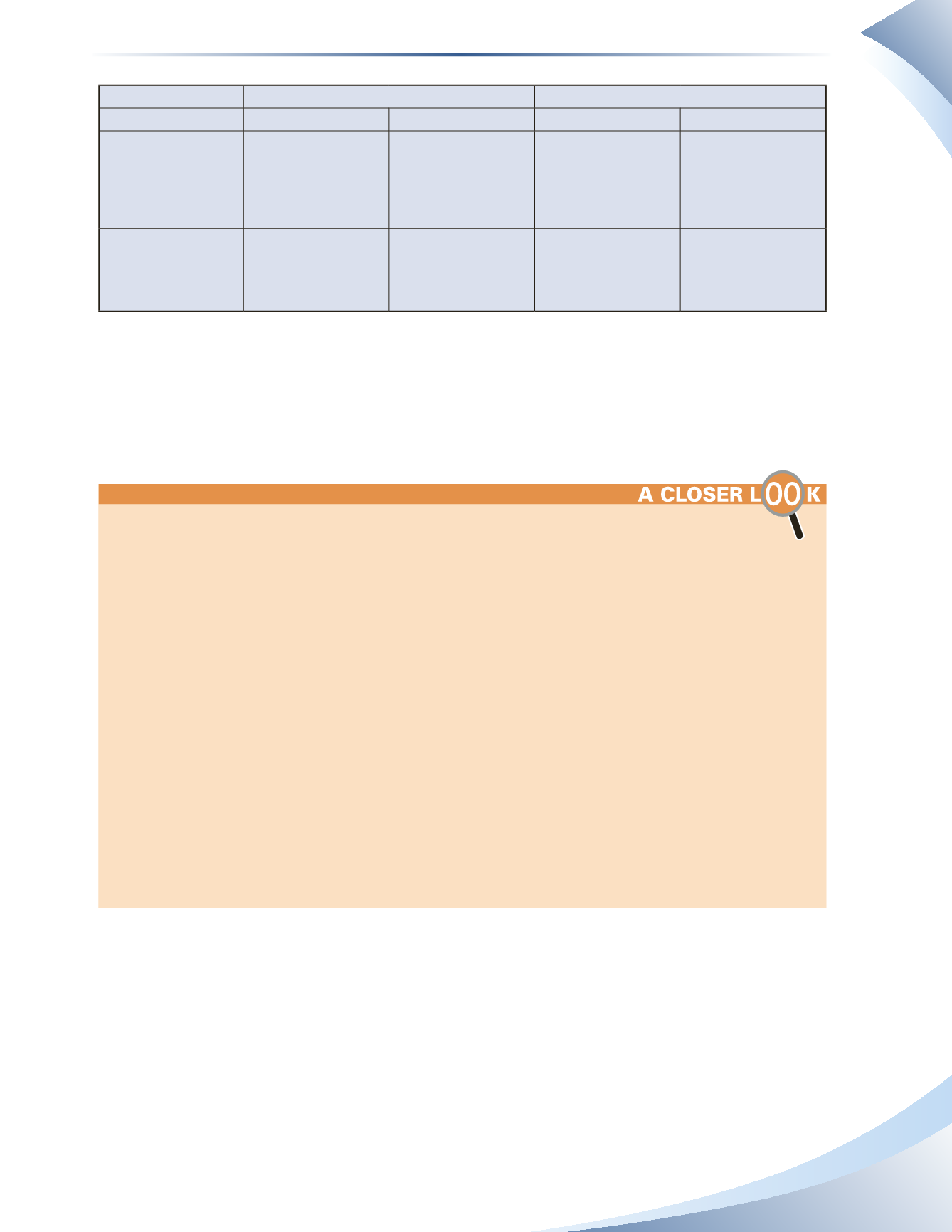
213
Transaction
Perpetual*
Periodic*
Debit
Credit
Debit
Credit
Sales Returns
Sales Returns &
Allowances (I/S)
Inventory (B/S)
Cash or Accounts
Receivable
Cost of Goods Sold
(I/S)
Sales Returns &
Allowances (I/S)
Cash or Accounts
Receivable
Sales Allowance
Sales Returns &
Allowances (I/S)
Cash or Accounts
Receivable
Sales Returns &
Allowances (I/S)
Cash or Accounts
Receivable
Receipt with
Discount
Cash
Sales Discounts (I/S)
Accounts
Receivable
Cash
Sales Discounts (I/S)
Accounts
Receivable
*B/S = Balance Sheet and I/S = Income Statement
____________
figure 7A.16
In essence, the mechanisms behind recording these transactions under both inventory tracking
methods are the same.They only differ in the way that no “inventory” and “cost of goods sold”
accounts are present under the periodic inventory transactions.
The accurate financial performance of a company that uses the periodic system can only be
calculated when an inventory count is performed and the cost of goods sold is calculated. If a business
wanted to see how it was performing between inventory counts, it may have to make some adjustments to
the reports before the numbers are useful for decision making.
For example, a nursery selling flowers and other plants may operate from May to October. After closing in
October, it performs a physical count of inventory and prepares formal financial statements.
Before it opens in May, it has to purchase soil and seeds and start growing plants in the greenhouses in
preparation for spring. These purchases are made before any sales are made. Recall that under a periodic
inventory system, cost of goods sold = beginning inventory + purchases − ending inventory. If the company
uses the periodic inventory system and wanted to see its performance after one month of operations (May),
without counting inventory, only the beginning inventory and purchases amount would be available for the
purposes of calculating cost of goods sold. That is, ending inventory would be missing. By not deducting
ending inventory, the information presented would be distorted and it would appear the company is
operating at a loss.
To prevent the distortion of the financial statements, management can instead estimate what cost of goods
sold was using the gross profit method which will be discussed in a later chapter.
For example, if the nursery typically operates at 40% gross profit during the sales season, the following
figure illustrates how the income statement could be estimated without doing a physical inventory count.
Inventory: Merchandising Transactions
Chapter 7 Appendix


